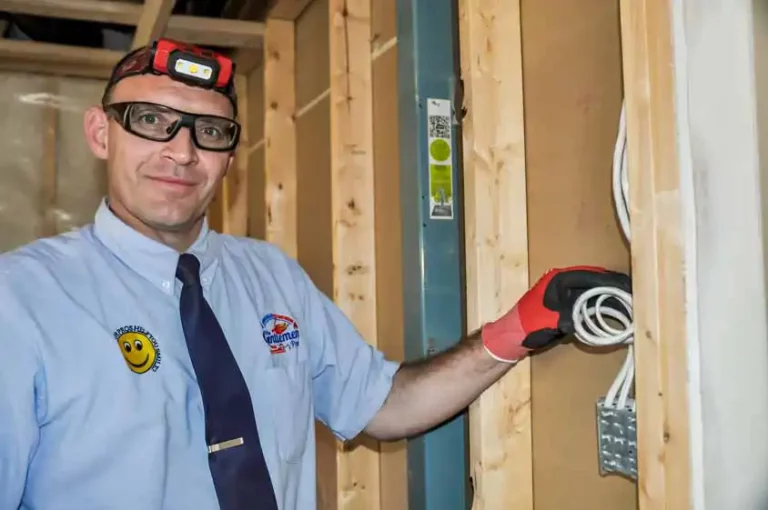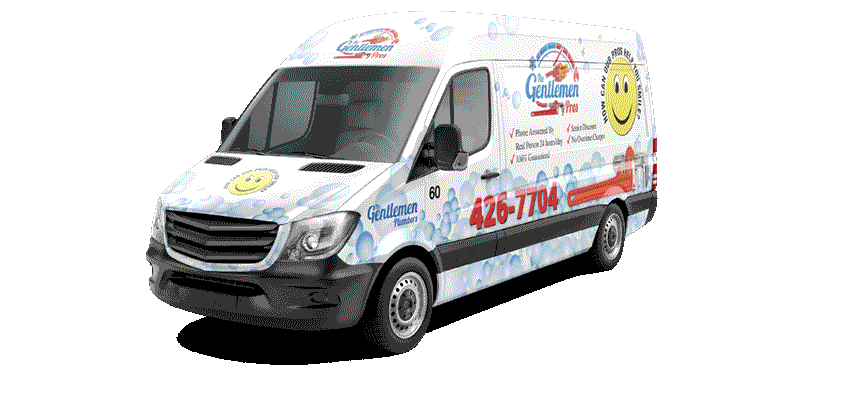We're In Your Neighborhood!

Same Day Service
Since 2001
Call The Gentleman Pros Now!
(403) 879-1759
We're In Your Neighborhood!


Same Day Service
Since 2001
Call The Gentleman Pros Now!
(403) 879-1759

If you’re looking for an electrician with a wealth of experience and knowledge, call The Gentlemen Electricians. Our electricians have the skills necessary to tackle any sort of repairs or new installations that you may need.
With each service call, expect the best service. Our electricians will teach you the best ways to maintain your home, and keep your household safe.

The Gentlemen Pros are your local electrical experts! Here are a few reasons to consider calling The Gentlemen Pros for your next electrical visit.
We are a family-owned medium-sized electrical business that specializes in rewiring homes to make them safer and more energy efficient.
Our work is performed by our licensed professional electricians and exceeds the standards set out by the Canadian Electrical Code.
We are also proud of our A+ rating with the Better Business Bureau and the thousands of 5-star customer reviews we’ve attained over the years.
100% Satisfaction Guaranteed. Lifetime Warranty on Electrical Quality Workmanship.
Our commitment to you is 100% satisfaction. We will provide you with top notch, professional electricians in Calgary who will work with you and understand your goals. If the work is not done to local, provincial and national guidelines, we will refund your money. Our electricians are fully insured, bonded and licensed for your protection.
We are also proud of our A+ rating with the Better Business Bureau and the thousands of 5-star customer reviews we’ve attained over the years.
100% Satisfaction Guaranteed. Lifetime Warranty on Electrical Quality Workmanship.
Our commitment to you is 100% satisfaction. We will provide you with top notch, professional electricians in Calgary who will work with you and understand your goals. If the work is not done to local, provincial and national guidelines, we will refund your money. Our electricians are fully insured, bonded and licensed for your protection.
Your electrical services are an integral part of your home. It keeps your lights on, devices powered, and appliances working. In fact, it powers your life.
When it isn’t working correctly or to your satisfaction, it really puts a kink in your day, and not only that, it can be really unsafe.
Our licensed electricians can tackle any electrical problem your house may have. They will come to your home and correctly diagnose and remedy the problem.
We take the utmost care in hiring our electricians, so you can be sure the person entering your home is not only skilled and well-trained but very trustworthy. All our electricians are licensed, bonded, and insured. We also conduct a criminal background check and drug testing on our technicians. And we guarantee their work.
Tell us your electrical problems, we’re here to help. Book a visit online or if you want to speak to a person, give us a call at (403) 879-1759, we are available 24/7.
Electricity is generated by a facility and then delivered to your home on a series of transmission and distribution lines that can either be above ground or underground.
The electricity generated at a facility has low voltage. To travel the distance the electricity needs to travel, it will need high voltage. So it enters a step up transformer that increases the voltage.
From the step up transformer, the high-voltage electricity is carried over great distances on high transmission lines to a step-down or terminal substation. Here the electricity flows through transformers to lower the voltage to the level necessary for the next stage of the trip.
From here the electricity travels on transmission lines to the next substation. Here the voltage is lowered again. For the next stage of the journey, the electricity is carried a shorter distance on distribution lines. The distribution lines carry the electricity to our homes and businesses. These lines can also be underground.
From the distribution lines, the electricity travels through either an overhead or underground service connection to your home. Source: Electricity System Basics, Enmax
Did you know that, generally, everything up to and including the electric meter is your utility’s responsibility? But please double-check with your utility, because there are exceptions to every rule.
Once the electricity enters your house, it flows through the main electrical panel which distributes it throughout your house on several circuits. Before we get into how many circuits, let’s find out what a circuit is.
Our homes use current electricity to power our lights, laptops, and TVs. And current electricity runs in a loop which is called a circuit.
In a nutshell, electricity enters your home and flows through it on wires (usually black) referred to as “live” or “hot” wires. It exits your home on the “neutral” wire (usually white).
A circuit is either closed or open. The circuit must be closed for electricity to flow and reach the light fixture, device, or appliance you want to power.
When the circuit is open, it stops the flow of electricity. Imagine it like a drawbridge, when the drawbridge is down, it “closes” the gap, and electricity can cross the bridge and continue to flow. When the drawbridge is up, it opens the gap, and the electricity cannot get to the other side and the flow of electricity is stopped.
A good example of opening and closing a circuit is when you turn on a light switch, you close the circuit and the electricity can flow to the light fixture. When you turn it off, you open the circuit, creating a gap and stopping the flow of electricity.
Now back to your electrical panel. The electrical panel divides the electrical current onto branch circuits that distribute the electricity throughout your house. Each branch circuit has a circuit breaker (or in pre-1970s homes, a fuse). So if you want to know how many branch circuits your house has, count the number of circuit breakers in your electrical panel.
Your branch circuits will be mostly 120-volt circuits. These circuits service your standard outlets and lighting circuits. You will also have one or two 240-volt branch circuits, depending on your needs. These branch circuits service circuits that provide electricity to your major appliances like your air conditioning unit or your dryer.
The 120-volt circuits are usually 15 amp (ampere) or 20 amp circuits. And the 240-volt circuits are usually either 30 amp, 40 amp, 50 amp, or 60 amp.
For electricity to work each 120-volt branch circuit needs a neutral wire which brings the electricity back to the main panel, through the electricity meter, and back into the grid.
The neutral wire, which is usually white, completes the circuit.
For more in-depth information, please check out How Does My Home’s Electrical System Work?



